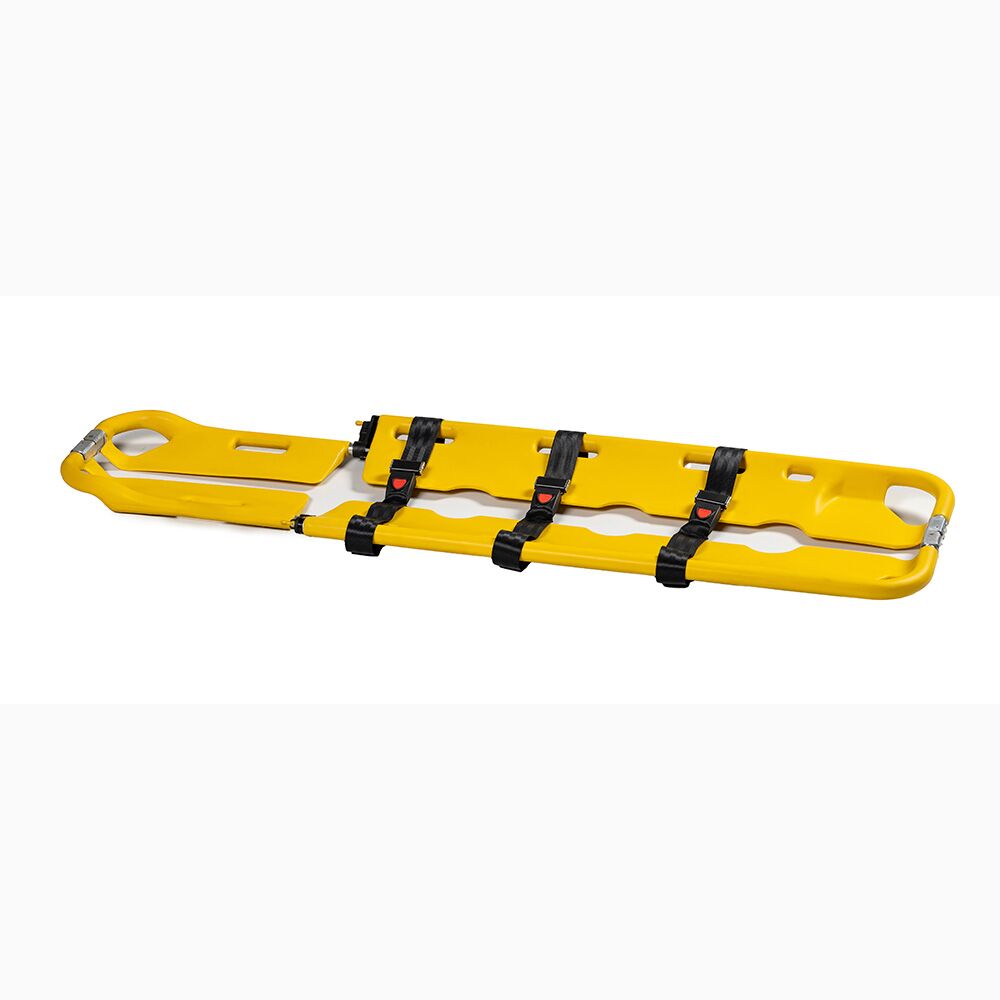Portable Scoop Stretchers for Rescue and Patient Transfer
The evolution of portable scoop stretcher technology continues improving emergency medical care. Such devices are the basic equipment of any serious emergency response operation, as they are characterized by the combination of patient safety and operational efficiency under critical conditions.

Speaking of emergency medical cases, one of the items of equipment that comes to our mind as an essential one in terms of safe patient transportation is a stretcher. The portable scoop stretcher has revolutionized how we handle trauma victims with potential spinal injuries. The new equipment reduces movement of the patients and also provides safe transportation of patients out of the accident scenes to the hospitals.
Understanding Scoop Stretcher Technology
A scoop stretcher operates on a simple yet brilliant design principle. The machine is divided vertically in two different halves with shaped blades that move under patients. We are able to place each half separately on each side of the injured individual. After that we intertwine them and fasten clips to the two ends. This approach would do away with risky log-rolling methods which may aggravate spinal injuries.
The clamshell design of the stretcher is unique in that it enables the emergency responders to scoop the patients without lifting and rolling them. This factor makes it very helpful when cervical spine injuries are suspected. Ever since the introduction of the technology in emergency care, we have seen phenomenal results in patient outcomes.
Key Features and Benefits
- Modern portable scoop stretchers offer several advantages over traditional rescue equipment. They are lightweight since they are made out of aluminum or composite materials, which make them easy to carry and move in tight spots. The models have a weight of 8-21 pounds with a capacity of up to 350 or more pounds.
- The translucent X-ray construction enables the medical practitioners to conduct diagnostic images without taking patients off the stretcher. This ability accelerates the treatment procedures in emergency rooms. The ergonomic handles on the sides give various grip points to safe lifting and carrying.
- The materials used are corrosion-resistant and hence durable even in severe conditions. The slippery surfaces allow them to be easily cleaned and sterilized before the next use. These factors make scoop stretchers cost-effective investments for emergency services and medical facilities.
PureLife Medical Solutions
- Leading manufacturers like PureLife have developed advanced scoop stretcher systems that meet modern emergency response needs. They have high strength composite PE material construction in their ST64021 model. The stretcher is 204x44x7cm when extended and 169x44x7cm when folded to be stored.
- This model has the capacity to hold a weight of 159kg and weighs 8kg. The X-ray translucent structure enables the instant medical imaging of the patient when they arrive at the hospital. This model is available on PureLife at the price range of 75 to 160 dollars, and it is affordable to different budget needs.
- The aluminum model (ST64011) offers comparable specifications that are made using a high-strength aluminum alloy. The two models are both individually packed in a protective carton of size 172x48x8cm. These professional-grade stretchers are inexpensive because of the competitive pricing, which is affordable to emergency medical services as well as rescue teams.

Rescue Basket Stretcher Applications
While scoop stretchers excel in ground-level rescues, some situations require specialized equipment. Rescue basket stretcher designs complement scoop stretchers in challenging environments. Such hard containers can be used to secure patients in helicopter evacuations or cliff rescues where external protection is vital.
The combination of scoop and rescue basket stretcher systems provides comprehensive patient transport capabilities. Emergency teams can transfer patients from scoop stretchers into basket stretchers for specialized transport situations.

Spinal Board Integration
Traditional spinal board systems work alongside modern scoop stretchers to provide complete spinal immobilization. However, scoop stretchers often eliminate the need for separate spinal board transfers. The combined design keeps the spine straight during the transportation process.
When spinal board use is necessary, scoop stretchers can facilitate safe patient placement without compromising spinal stability. The dual-blade system allows precise positioning onto spinal board surfaces. This integration makes the emergency process easier but the safety level is not affected.
Training and Implementation
- Proper training ensures effective scoop stretcher deployment in emergency situations. We suggest a practical exercise where they will have to practice in a real-life scenario of rescue. Emergency responders should know how to position the blades and how to secure the patient.
- Regular maintenance checks preserve equipment reliability and extend service life. Inspection protocols should include blade alignment verification and clip mechanism testing.
Cost Considerations and Value
Investment in quality scoop stretchers pays dividends through improved patient outcomes and reduced liability risks. High-end models of well-known manufacturers such as PureLife are reliable and relatively affordable. Most of the emergency services budgets are within the price range of $75 -160.
Long-term value is provided by fewer complications to patients and shorter duration of treatment. The durability of the equipment reduces the cost of replacement over the years of use.
Frequently Asked Questions
Q: How much weight can a scoop stretcher safely support?
A: Most professional scoop stretchers support 350-400 pounds, though specific models vary. It is always good to refer to the specifications of your equipment by manufacturers.
Q: Can scoop stretchers be used for non-trauma patients?
A: Yes, scoop stretchers work well for any patient requiring stable transport, including those with mobility limitations or chronic conditions.